
By Dr. Mike Twardowski, Research Professor, Harbor Branch Oceanographic Institute, Florida Atlantic University
March 25, 2018
This is Dr. Mike Twardowski, Research Professor at Harbor Branch Oceanographic Institute (HBOI), Florida Atlantic University reporting from NOAA Ship Okeanos Explorer in the central northern Gulf of Mexico. With support from the Cooperative Institute for Ocean Exploration, Research & Technology (CIOERT), we are testing new technology to study the “twilight zone” of the ocean, the region below the surface where organisms such as fish, squids, and zooplankton live in a low-light environment because it enhances their survival. Every evening, these organisms undergo the largest migration on the planet, swimming hundreds of meters from the depths to the surface ocean to feed through the night.
Below are the acoustic returns at two different frequencies that allow us to monitor these migrations using emerging technology provided for this expedition by the University of New Hampshire, Center for Coastal and Ocean Mapping. The images show layers of organisms rising to the surface over time, following isolumes, or levels of constant light, as the sun sets. Different organisms appear to follow different isolumes. While this remarkable multi-frequency acoustic technology allows us to document these migrations remotely, the composition and the dynamic patchiness of these rising layers is something we are trying to better understand.
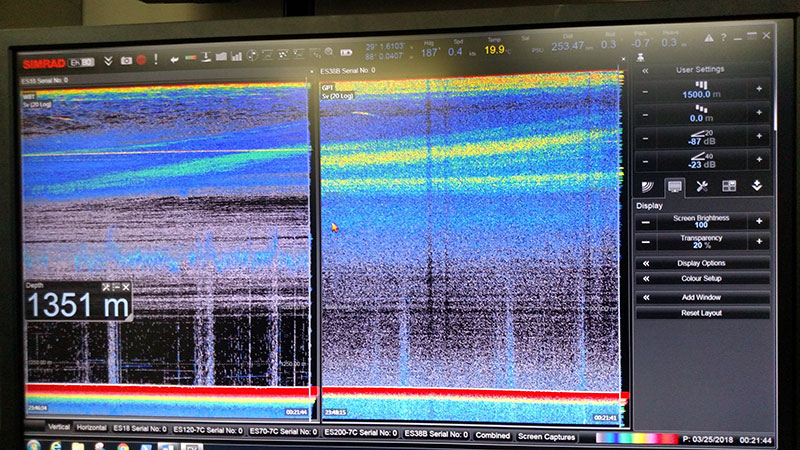
Image courtesy of Florida Atlantic University and the Gulf of Mexico Technology Demonstration. . Download larger version (jpg, 9.1 MB).
The image above shows the acoustic returns at two different frequencies that allow us to monitor these migrations using emerging technology provided for this expedition by the University of New Hampshire, Center for Coastal and Ocean Mapping. The images show layers of organisms rising to the surface over time, following isolumes, or levels of constant light, as the sun sets. Different organisms appear to follow different isolumes. While this remarkable multi-frequency acoustic technology allows us to document these migrations remotely, the composition and the dynamic patchiness of these rising layers is something we are trying to better understand.
In the images, there is a horizontal, bright acoustic return at 300 meters (984 feet) from our sensing package of emerging technologies (shown in the image below) held stationary at that depth.
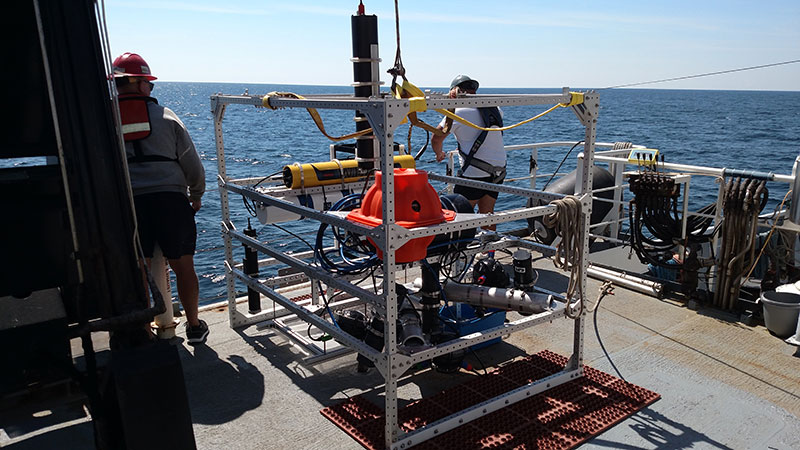
Image courtesy of Florida Atlantic University and the Gulf of Mexico Technology Demonstration. . Download larger version (jpg, 7.3 MB).
This suite of sensors (pictured above) includes high-frequency acoustic sensors from collaborators Drs. Brad Penta (Naval Research Laboratory) and Kevin Boswell (Florida International University) that allow us to map distributions of individual returns from organisms at finer scales while at depth. There is also a prototype time-gated laser imaging system developed by Dr. Fraser Dalgleish (HBOI) that enables us to image the hemisphere below the sensor cage in three dimensions at ranges of up to 10 meters (33 feet), while remaining eye-safe and invisible to marine life.
The imaging system is a game changer in non-invasive marine life monitoring when compared to typical camera and strobe systems. Below is an image from the dawn migration this morning, showing swarms of zooplankton and mucilaginous organisms.
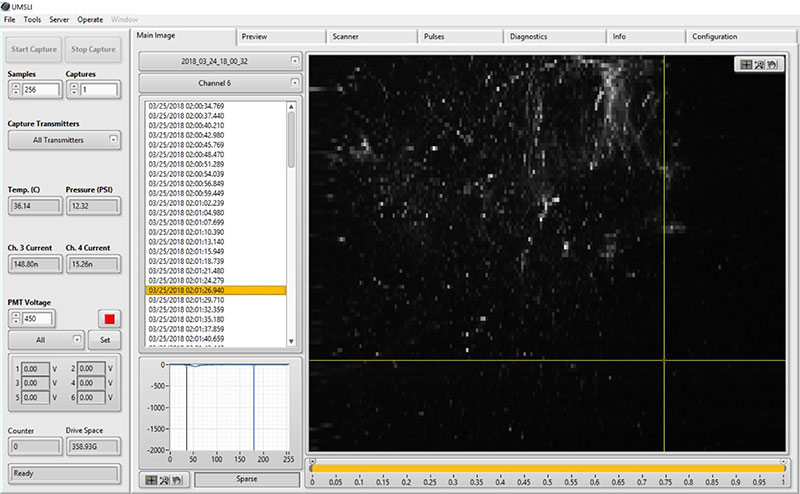
Image courtesy of Florida Atlantic University and the Gulf of Mexico Technology Demonstration. . Download larger version (jpg, 1.2 MB).
We also have a newly developed bioluminescence detection system called a Spatial Plankton Analysis Technique (SPLAT) camera consisting of a suspended screen imaged onto a special low-light camera. As the sensor cage is sent down to depth, bioluminescent organisms hit the screen and glow blue. The size, shape, and duration of the glowing light allow some level of classification of organism type.
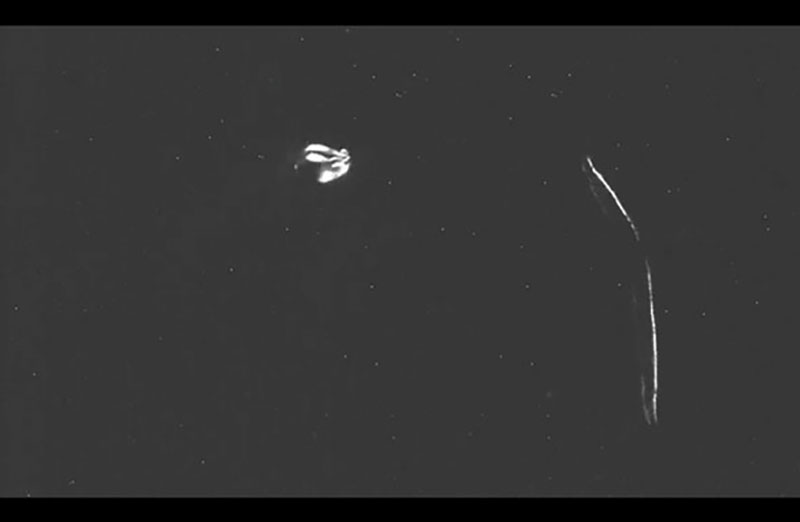
This SPLAT camera image is from this morning’s cast. Image courtesy of Florida Atlantic University and the Gulf of Mexico Technology Demonstration. . Download image (jpg, 14.0 KB).
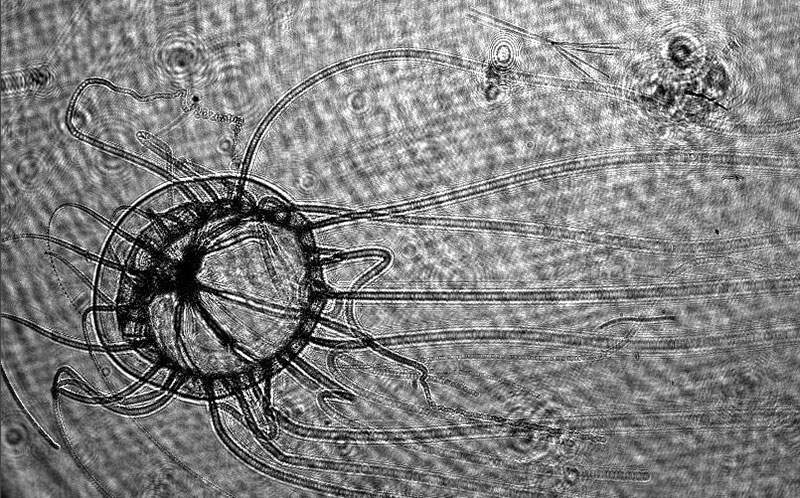
Image courtesy of Florida Atlantic University and the Gulf of Mexico Technology Demonstration. . Download larger version (jpg, 393 KB).
On the finest scales, we are making measurements of the scattering properties of microbial particles and collecting holographic imagery of these particles for classification with a prototype system, as in the image shown above.
Testing new technologies (in some cases for the first time!) can be a challenging experience requiring lots of troubleshooting and patience. So far, we are all systems go due to a terrific team of dedicated postdocs and engineers.
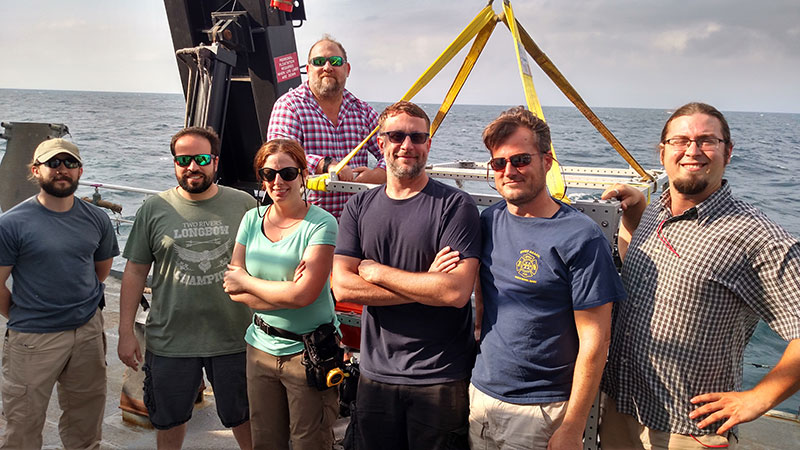
In the photo, from left: Dr. Brandon Russell, Brian Ramos, Nicole Stockley, Dr. Fraser Dalgleish, Dr. Alberto Tonizzo, Dr. Mike Twardowski, and Chris Strait. Image courtesy of Florida Atlantic University and the Gulf of Mexico Technology Demonstration. . Download larger version (jpg, 7.0 MB).
And all measurements we are collecting now are made possible by the outstanding crew of the Okeanos Explorer, accommodating operations at all hours with indelible alacrity and patience! Thank you!